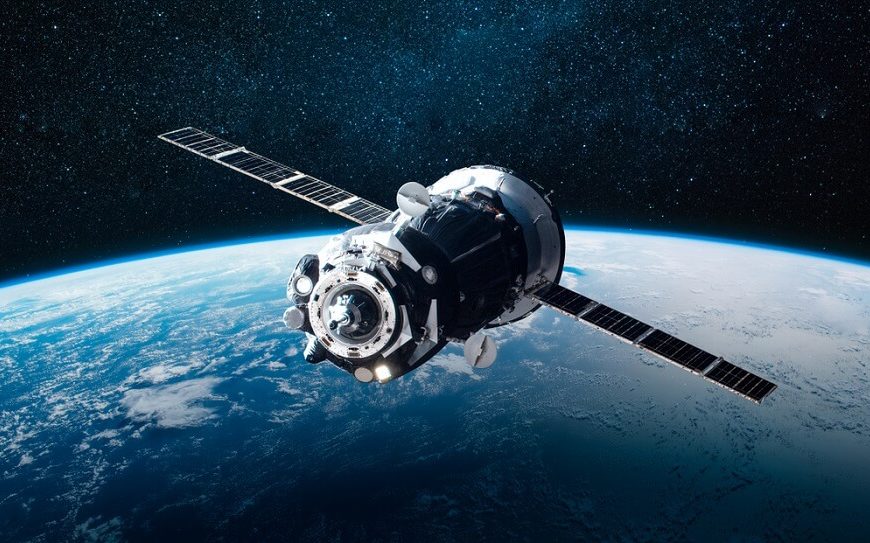Satellites are fascinating devices that orbit our planet, and sometimes even other celestial bodies. They serve a variety of purposes, from helping us to communicate across long distances to exploring the mysteries of our universe. But what is a satellite? How many types of satellites are there? This article will provide you with satellite information and satellite facts that will make these questions clear for children and those curious to learn.
What is a Satellite?
The word “satellite” might sound like something very technical and complex. However, at its core, it’s quite simple. A satellite is any object that orbits around a larger object in space. Earth itself is a satellite because it orbits around the Sun. Our Moon is also a satellite, orbiting Earth.
However, when we usually talk about satellites, we are often referring to man-made devices that are sent into space for a variety of tasks. They relay our phone calls, take pictures of other planets, and even help forecast the weather! It’s incredible to think about how much we rely on satellites for daily life.
Example:Have you ever watched a weather forecast on TV? Those images showing clouds and storms are often captured by weather satellites orbiting our Earth.
Types of Satellites
You might be surprised to know that there are many types of satellites, each designed for a specific job. Let’s explore some of the most common ones:
- Communication Satellites:
- Weather Satellites:
- Reconnaissance or Spy Satellites:
- Navigation Satellites:
- Space Exploration Satellites:
These satellites help in transmitting signals for television, radio, internet, and telephone. Next time you’re making an international call, remember it might be possible because of these satellites!
These provide meteorologists with data to predict the weather. They can show us where it’s raining, where there are clouds, and even the temperature in different parts of the world.
Used mainly by governments, these satellites can take very detailed pictures of the Earth’s surface. They help in keeping an eye on various activities happening worldwide.
These are the reasons why the GPS on your phone or in cars work. They help us find our way by giving exact locations.
These satellites, like the Hubble Space Telescope, help scientists study distant stars, galaxies, and other celestial wonders.
Example: If you’ve ever used a navigation system in a car or on a phone, you’ve benefited from the Global Positioning System (GPS), which works thanks to a constellation of navigation satellites.
Satellite Facts to Amaze Your Friends
Here are some satellite facts that might surprise you:
- The First Satellite:
- Satellites Can Be Tiny:
- Speedy Orbits:
- Satellites Need Power:
The first man-made satellite was called “Sputnik 1” and was launched by the Soviet Union in 1957.
Some satellites are as small as a shoebox! These “CubeSats” are often used for scientific research and are much cheaper to launch.
Some satellites travel at speeds of up to 28,000 kilometres per hour! That’s much faster than any car or aeroplane on Earth.
Satellites use solar panels to get energy from the Sun. This power helps them run their instruments and communicate with Earth.
The Evolution of Satellites
When we consider the span of human history, satellites are a relatively recent phenomenon. Yet, their evolution has been rapid, and the impact they’ve had on society has been transformative.
- From Humble Beginnings
- Satellite Constellations
- Natural vs. Man-made Satellites
- The Lifespan of a Satellite
- The Future of Satellites
Following Sputnik 1, the race to launch and utilise satellites became a focal point during the Cold War era. The United States soon followed with its first satellite, Explorer 1, in 1958. Since then, space agencies from various nations have launched thousands of satellites into orbit.
Example: Did you know that after the initial few satellites, innovations started pouring in? The Telstar satellite, launched in 1962, became the first to relay television, telephone, and high-speed data communications.
While early space endeavours often focused on single satellite missions, a significant shift in recent years has been towards satellite constellations. These are groups of satellites working together. One famous example is the Starlink project, aiming to provide global internet coverage through a network of thousands of small satellites.
While we’ve focused a lot on man-made satellites, it’s worth noting the distinction between them and natural satellites. Planets, including Earth, have natural satellites – for Earth, it’s our Moon. There’s a stark difference in appearance, composition, and function between natural satellites like moons and our human-made metal counterparts. However, what is consistent is the principle of orbiting a larger body due to gravitational pull.
Another interesting satellite fact is that they don’t last forever. Satellites have a lifespan, often determined by the amount of fuel they carry and their operational conditions. When satellites reach the end of their operational life, they can become ‘space junk’, orbiting Earth without a specific purpose. Efforts are being made globally to find solutions for this increasing space debris problem.
Example: Some companies and agencies are working on technologies to ‘clean up’ space by capturing defunct satellites and safely de-orbiting them.
The satellite industry is on the brink of even more significant advancements. With the advent of miniaturised technology and cheaper launch costs, more countries and private companies can now send satellites into space. This democratisation of space is leading to innovations, from agricultural monitoring to real-time global internet coverage.
Satellites, with their myriad uses, have transformed the way we live, work, and play. Whether it’s helping us communicate, navigate our way around, predict the weather, or explore the universe, satellites play a crucial role in modern life. It’s fascinating how these objects, both natural and man-made, have such a profound impact on our daily existence. The next time you look up at the night sky, ponder on the satellite information and facts you’ve learned, and appreciate the marvels of technology and space exploration.
At EuroKids Preschool, we believe in nurturing young minds by sparking their natural curiosity about the world around them.















